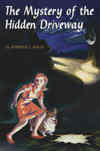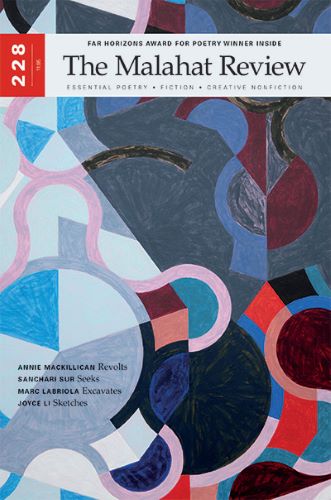The Mystery of the Hidden Driveway
In The Mystery of the Hidden Driveway, Jennifer Knox reveals a gift for making readers laugh. All 43 poems in this volume display great wit—a possible liability in hands less adroit than Knox’s. Fortunately, while rendering comical scenes, she never sacrifices pathos for a joke. Her poems feature complicated humor that emerges from funerals and interventions. Always keeping in view the high stakes for her speakers—and their friends, parents, and lovers—Knox dances on the edge of the ridiculous, obliging people to laugh at difficult situations for which there are not rational responses.
In The Mystery of the Hidden Driveway, Jennifer Knox reveals a gift for making readers laugh. All 43 poems in this volume display great wit—a possible liability in hands less adroit than Knox’s. Fortunately, while rendering comical scenes, she never sacrifices pathos for a joke. Her poems feature complicated humor that emerges from funerals and interventions. Always keeping in view the high stakes for her speakers—and their friends, parents, and lovers—Knox dances on the edge of the ridiculous, obliging people to laugh at difficult situations for which there are not rational responses.
In every one of the four sections in The Mystery of the Hidden Driveway, Knox is unafraid to expose the foibles of her speakers, and this generates much of the book’s biting humor. For instance, in “Old Friends,” the speaker deems herself better than a former acquaintance who once “drowned eight kittens in a sack.” The speaker reflects how she has “become a better person / certainly better than the woman I knew, who I would never be friends with / again.” Yet she soon realizes that in acting superior, she has done what she condemns, submerging others who cannot protect themselves: “the bodies / of all the people I’d drowned in sacks years ago begin / falling from the sky, heavy like wet sandbags from a crane.” By poking fun at her speaker in this hyperbolic scene, Knox invites us to step back from our lives, to laugh at the predicaments in which we find ourselves—and the severe attitudes we adopt toward them.
Knox also helps us to gain perspective on ourselves by invoking popular role models from film and television. Gene Kelly, Burt Reynolds, and Dirty Harry all appear in her poems. In “Anomalies of the Female Reproductive System,” when a gynecologist tells the speaker that she needs a mammogram she cannot afford, the actress Mary McDonnell intervenes:
Mary and I use lasers from the Battlestar Galactica series
in which she played the President to slay the old doctor
and cut up her body. Then we feed the pieces to the hawks
in Central Park.
Such campy allusions not only have the power to make readers chuckle but also raise questions about the capacity of media to articulate experience. Are we stuck with memories of the movies and TV shows on which we grew up—or worse still reruns and remakes—as we try to make sense of our lives? “Beverly Hills Cop III” exposes the tawdriness of memory, correlating it to a second sequel:
This again, but way lamer. We started out
outlaws, now we’re law (in chichi suits, yet).
Why does every bright, rare thing we are boil
out like wine’s kick in a simmered port glaze,
leaving only virgin vapors, Ghost of Badass?
It is easy to ridicule an inferior copy of a copy. But the sense of loss here is strong, too, as the speaker struggles to come to grips with aging.
Yet Knox never indulges in nostalgia. She appreciates too much the pleasures of the moment, particularly when those pleasures are sexual. Again and again, she represents couples indulging one another, both physically and emotionally. In “Nice ‘N Easy Medium Natural Ash Brunette,” a new pair copulates “like animals, for hours / as some wildly expensive thing in the oven burned.” In “Crawling Out of the Mouth of More,” after contemplating how to raise the stakes in her love life, the speaker admits that “we’d have to leave regular fucking behind,” if toys and additional partners became commonplace in her bedroom.
Knox is interested in other kinds of connections between people as well. The third section of The Mystery of the Hidden Driveway, “Cars,” dwells on family bonds. In a sequence of loosely connected prose pieces, Knox tracks a father-daughter relationship by concentrating on the way the pair comport themselves behind the wheel. More often than not, the young woman acts recklessly, much to the frustration of her father.
Father-Daughter Day. He pulls over on the side of the Hollywood Freeway and sobs. “I’m sorry. I’ve worried about you so much. So much more than your brother….” I have never seen him cry, but he really does. He bawls. I say, “It’s OK,” and I mean it, because suddenly I know he’s just scared. That’s why he did all the things that he did.
“Cars” features many such compelling dramatic scenes. However, it lacks the precise and nuanced use of line that defines Knox’s voice in the book’s other three sections. For all the laughter her poetry provokes, it is tightly controlled, reflecting a command of form that makes a second and third reading enjoyable, even after one knows all the punch lines.





